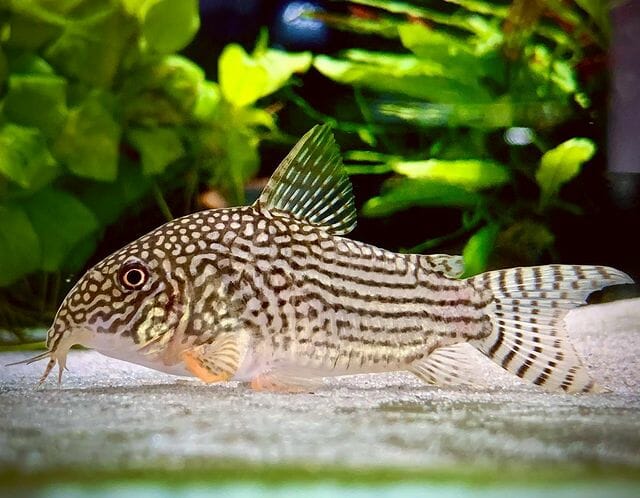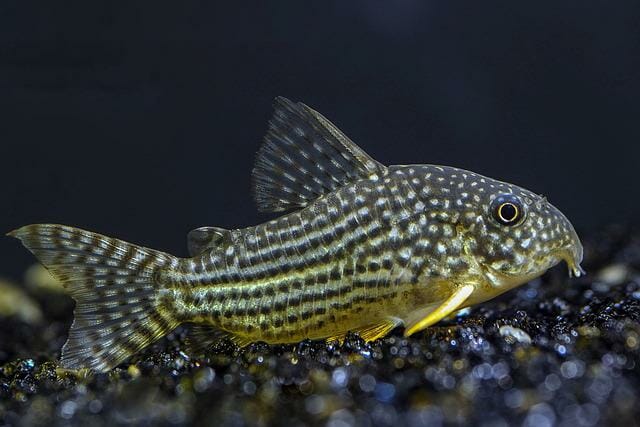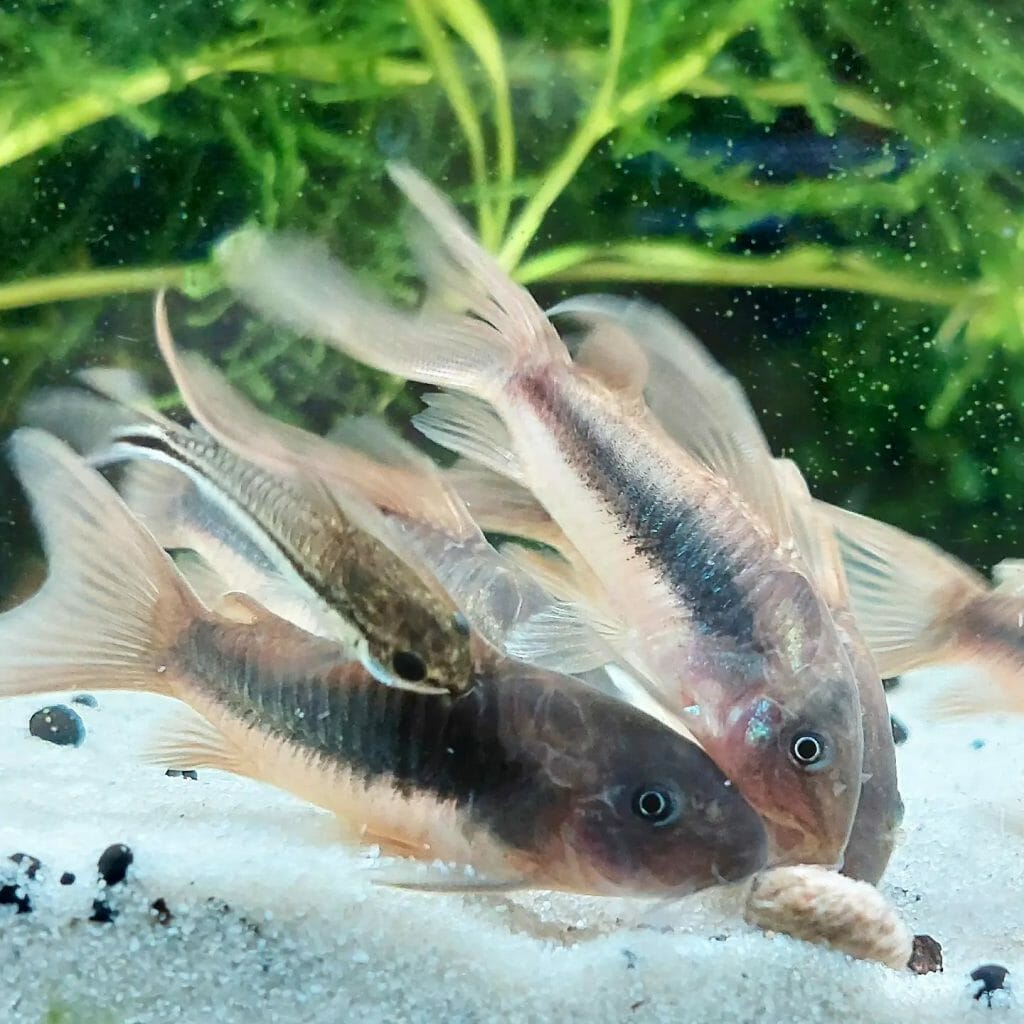Are Cory Catfish Aggressive: How to Avoid Aggression

Cory catfish are not considered aggressive, but they may sometimes depend on the individual cory catfish and its personality. Some cory cats are more aggressive than others, but all can be grown in a healthy aquarium with proper care. These fish are pretty easygoing and more gentle than many other types of aquarium fish available.
The aggressive behavior shown by some cory cats can be hereditary but is not always the case; this type of behavior could also occur due to improper maintenance or caretaking. On occasion, you may see an aggressive cory catfish with enough stress or water quality issues in your tank. In these cases, removing the fish from the tank can help to restore harmony and prevent further problems.
Table of Contents
How to Avoid Cory Catfish Aggressiveness
Select Appropriate Tankmates
In choosing an aquarium mate for a cory catfish, it is essential to consider both fish’s personality and overall compatibility. Choosing a non-aggressive or less adventuresome fish will help to keep your tank environment peaceful and calm. Some popular choices include neon tetras, dwarf gouramis, and danios.
Provide Plenty of Aquarium Space
Make sure you have enough room for your cory catfish in your aquarium. If choosing a small fish, you should consider the appropriate size from listing to sizing up or down so that it does not negatively affect the water quality and behavior of other species within the tank.
Maintain Fresh and Clean Water Conditions
In maintaining proper water conditions, a great way to ensure that your cory catfish still exhibits its personality is always keep a close eye on daily aquarium parameters. You can do this by regularly testing your local community stream for ammonia levels and pH throughout the tank, keeping them at optimal ranges.
Create Hiding Places
Cory catfish tend to live in small, tightly packed schools that can cause aggression if not provided hiding places for them. The best option is to have a large enough tank so that you do not need to alter your environment, as these fish are very adaptable and will allow their personality traits with modest adjustments.
What to Look for When Purchasing Cory Catfish?
When considering whether or not to purchase a cory catfish, it is essential to consider the fish’s size and temperament. Some Cory cats can reach lengths of up to 4 inches, so it is vital to make sure you have the room in your aquarium for this large fish. Additionally, some corys are more active and interactive than others; if you are looking for a laid-back pet fish that will sit quietly in its aquarium, avoid purchasing a cory catfish. On the other hand, if you are looking for an active and lively fish that will dart around your tank frequently, a cory catfish may be the right choice for you.
Cory Catfish: Species Overview

Origin
The cory catfish is a freshwater fish native to South America. You can find it in the United States, Canada, and Mexico. Additionally, You can find the cory catfish in Hawaii, Florida, and the Caribbean.
Adult Size & Lifespan
The cory catfish can reach lengths of up to 4 inches and have a lifespan of 5 years. Cory catfish mature around one year of age and grow relatively quickly.
Availability
The cory catfish is not typically available in the United States and can be found via online retailers in other parts, including Canada, Mexico, and the Caribbean. Additionally, the cory catfish is still an active import in Hawaii and the U.S. states of Florida and Louisiana.
Appearance and Temperament
The cory catfish is a slender fish with a few spikes on its head and two dorsal fins oriented towards the rear of the fish. This fin can be black, olive green, or red. The cory catfish has small scales and lacks any distinguishing features other than its large eyes. The cory catfish is moderately aggressive and should not be kept with different types of aquarium fish without proper supervision.
They will dart around the tank and should not be frightened of people or other fish. The cory catfish is a good choice for beginner aquarists looking for an active pet that will dart around their tank. Good water quality and aquarium size are important factors when purchasing a cory catfish.
Colors, Patterns, Fins, and Sex Differences
The cory catfish possesses a wide variety of colors and patterns, including black, olive green, red, and cream. The fins can also be brightly colored with different stripes or bands, and there are no discernible sex differences in the cory catfish. Additionally, both males and females retain their shiny scales and fins throughout their life.
Typical Behavior
The cory catfish is a moderately aggressive fish that you should not keep with other types of aquarium fish without proper supervision. They will dart around the tank and should not be frightened of people or other fish. The cory catfish is a good choice for beginner aquarists looking for an active pet that will dart around their tank. Good water quality and aquarium size are important factors when purchasing a cory catfish.
Cory Catfish Care & Tank Requirements
Habitat and Aquarium Requirements
The cory catfish is commonly found in sluggish tropical rivers and lakes. They need a tank with at least 10 gallons of water and a medium to challenging water content for optimum health. The ideal pH range for the cory catfish is 7.0 to 8.0, but they can tolerate slightly lower or higher levels provided the quality of the water remains good. A temperature range of 74-80 degrees Fahrenheit is preferred, but they can withstand warmer or cooler temperatures provided good water quality.
Tank Conditions
The cory catfish prefers softer water with a suitable pH and hardness. They do best in tanks with moderate to heavy cover and can be aggressive toward other fish if they are not properly introduced into the tank. The cory catfish will eat insect larvae, small animals, and some detritus that falls from the water column. They should be fed sinking pellets and live food such as a mosquito or brine shrimp once a week.
Disease
The cory catfish is a robust fish that can usually handle common tank diseases but should be treated with specific antibiotics if caught in the early stages of an illness. Treatment for most common external tank diseases will include water changes and topical medications.
Diet and Feeding
The cory catfish will feed on various items but prefer sinking pellets, live food, and small fish. They should be provided once per week with 2-3 meals.
